Key takeaways:
- Recycling in crafts encourages creativity and self-expression through repurposing discarded materials.
- Engaging the community fosters collaboration and ownership, transforming waste into art while raising environmental awareness.
- Challenges include managing diverse skill levels and sourcing materials, highlighting the importance of adaptability and resourcefulness in projects.
- Creating an inviting space and fostering a supportive atmosphere can rekindle participant enthusiasm and commitment over time.
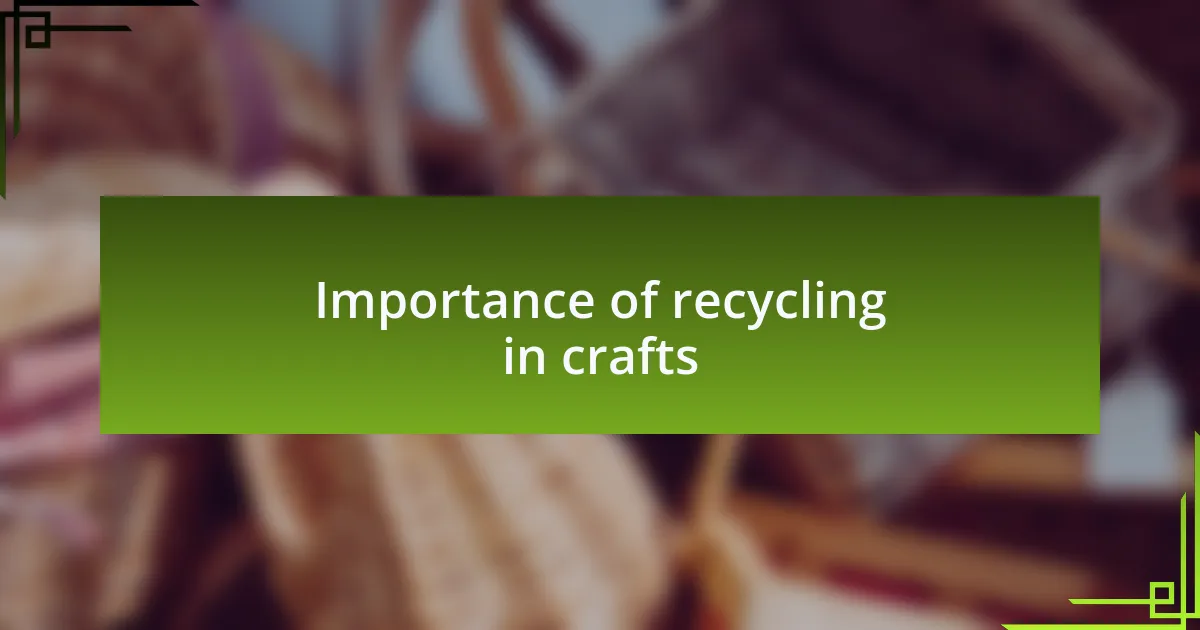
Importance of recycling in crafts
Recycling in crafts isn’t just about reducing waste; it’s an opportunity to tap into our creativity and resourcefulness. I remember my first experience turning old newspapers into vibrant paper flowers. Initially, it felt like a simple project, but as I layered colors and textures, I realized I was giving new life to materials that would have otherwise ended up in the trash. Isn’t it amazing how something seemingly insignificant can transform into a beautiful creation?
Imagine walking into a room filled with art made from discarded materials. There’s a certain magic in that—every piece tells a story of rebirth. When I led a workshop, participants shared their own experiences of finding inspiration in everyday items. Each creation reflected their unique personality and creativity, showcasing the profound impact of recycling not just on the environment, but on our self-expression as artists.
Recycling also fosters a sense of community and collaboration. In my initiative, we encouraged everyone to share their finds and ideas. One participant brought in a collection of bottle caps, which sparked a wave of innovation! Watching people work together, transforming what others deemed as waste into cherished crafts, reinforced my belief that recycling in arts and crafts can indeed connect us. How can we not cherish such moments of creativity and bonding?
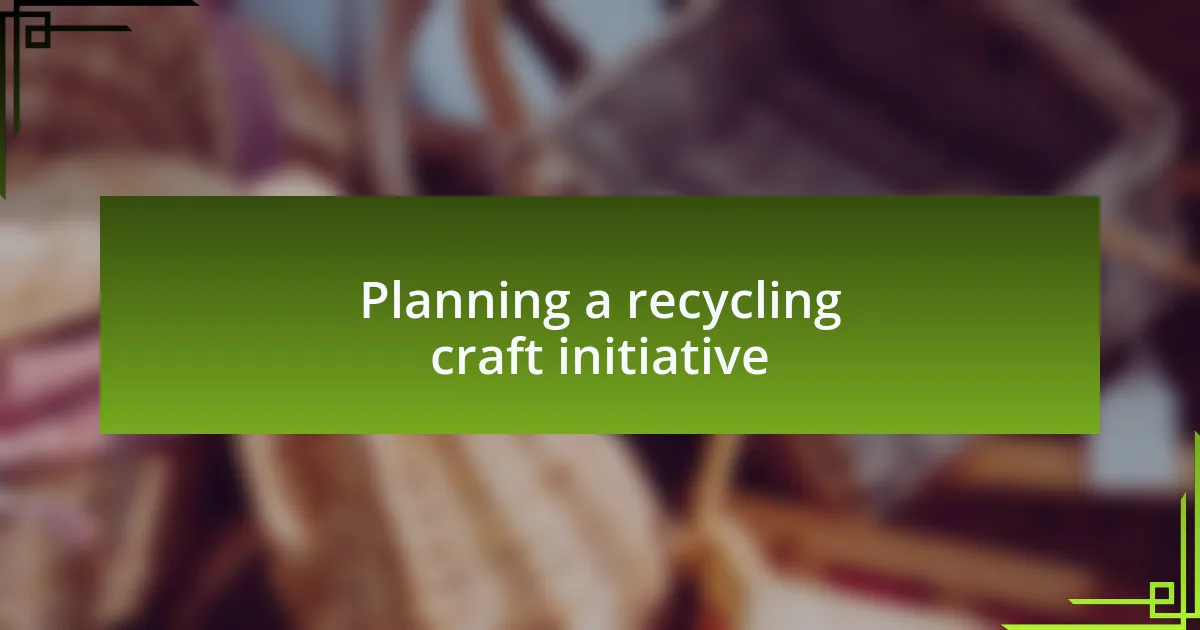
Planning a recycling craft initiative
Planning a recycling craft initiative requires thorough preparation and a clear vision. When I first sat down to organize my workshop, I made a checklist of materials I could source from my community. I found that reaching out to local businesses for contributions not only helped gather supplies but also engaged them in the project. Have you ever thought about how a simple ask can ignite collective enthusiasm?
I believe setting a theme can significantly enhance the experience. For example, we chose to focus on “Nature Reimagined,” creating crafts from plastic bottles, cardboard, and fabric scraps to raise awareness about environmental impact. I remember the thrill when participants embraced the theme, channeling their passion into innovative designs. It’s powerful to witness how a strong concept can turn a crafting session into a meaningful event!
Don’t underestimate the importance of creating an inviting space for your initiative. I arranged tables filled with colorful scraps and inspirational samples, which instantly sparked ideas in everyone. The atmosphere was electric, and I could feel the excitement as people shared their thoughts and visions. Isn’t it extraordinary how conducive environments can foster creativity and collaboration?
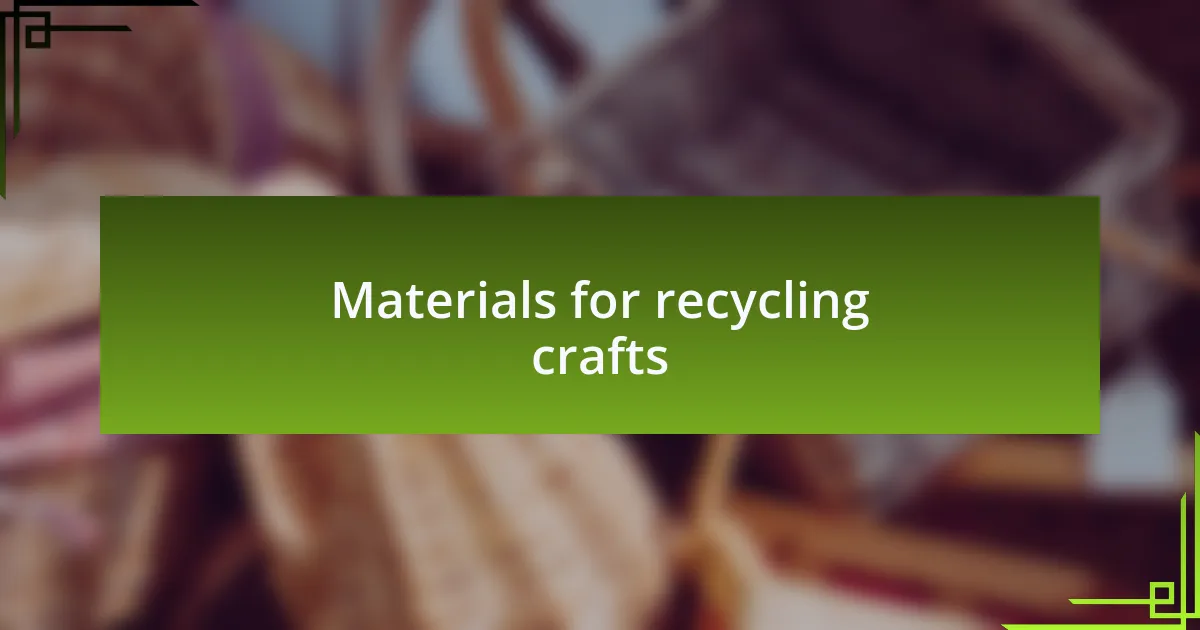
Materials for recycling crafts
When it comes to materials for recycling crafts, I’ve discovered a treasure trove in unexpected places. During my initiative, I found that old newspapers and magazines could be transformed into beautiful collages and paper mache projects. Have you ever seen someone’s face light up when they realize that something destined for the trash can become art? It’s quite a sight!
In my experience, glass jars offer incredible versatility as well. I remember a delightful moment when participants turned simple pickle jars into charming lanterns. With just a bit of paint and twine, what was once clutter became stunning home decor. It really makes you wonder: what other everyday items could we repurpose creatively?
Fabric remnants are another fantastic resource. I still recall the excitement among participants when we unveiled a box of colorful scrap fabric. The vibrancy ignited creativity, leading to unique creations like patchwork bags. Isn’t it amazing how a small piece of material can inspire so many ideas? The joy of seeing each person’s individual style emerge from such simple supplies was truly rewarding.
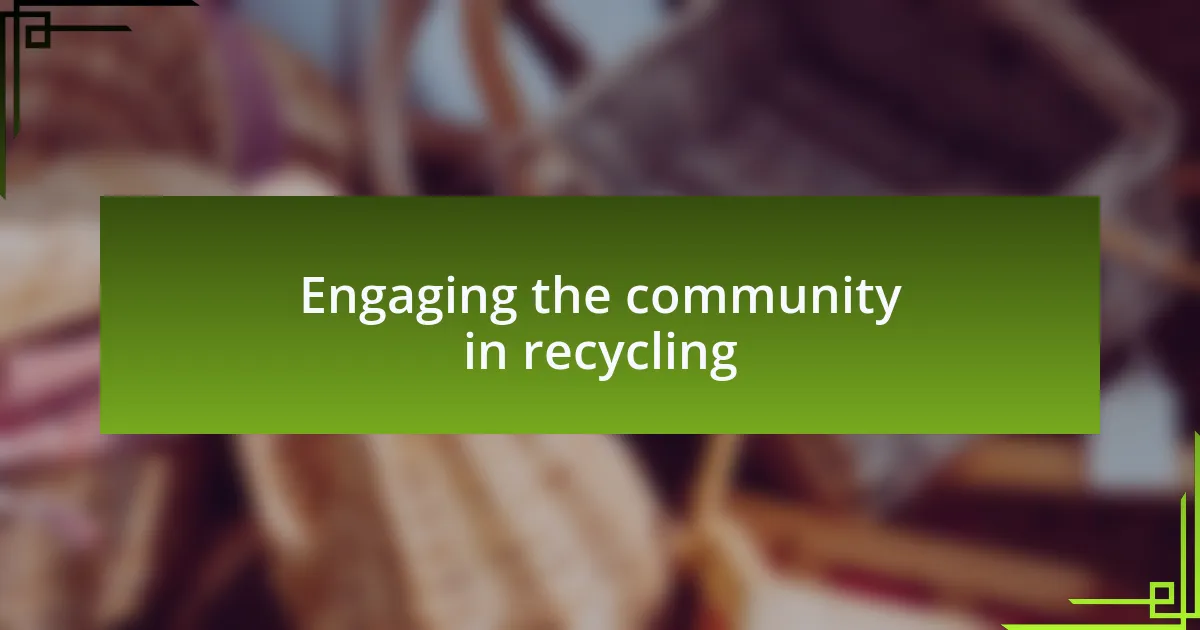
Engaging the community in recycling
Engaging the community in recycling truly transforms the way we view waste. During our workshops, I invited local residents to bring their own items to repurpose. It was rewarding to witness the sense of ownership and pride as they turned broken furniture into stylish garden art. Who knew that something forgotten in the garage could spark such creativity?
I remember one Saturday, we organized a community art show featuring all the pieces created by participants. The event brought families together and sparked conversations about sustainable practices. When I saw children proudly explaining their projects, I couldn’t help but feel hopeful about the next generation’s commitment to the environment. Isn’t it incredible how a simple craft can foster connection and awareness in our communities?
Moreover, partnering with local businesses to donate materials became a game-changer. I had the chance to collaborate with a nearby café that provided their unused coffee bags. This not only added a unique texture to our crafts but also deepened our community ties. It made me reflect: how can we all work together to make recycling a shared responsibility?
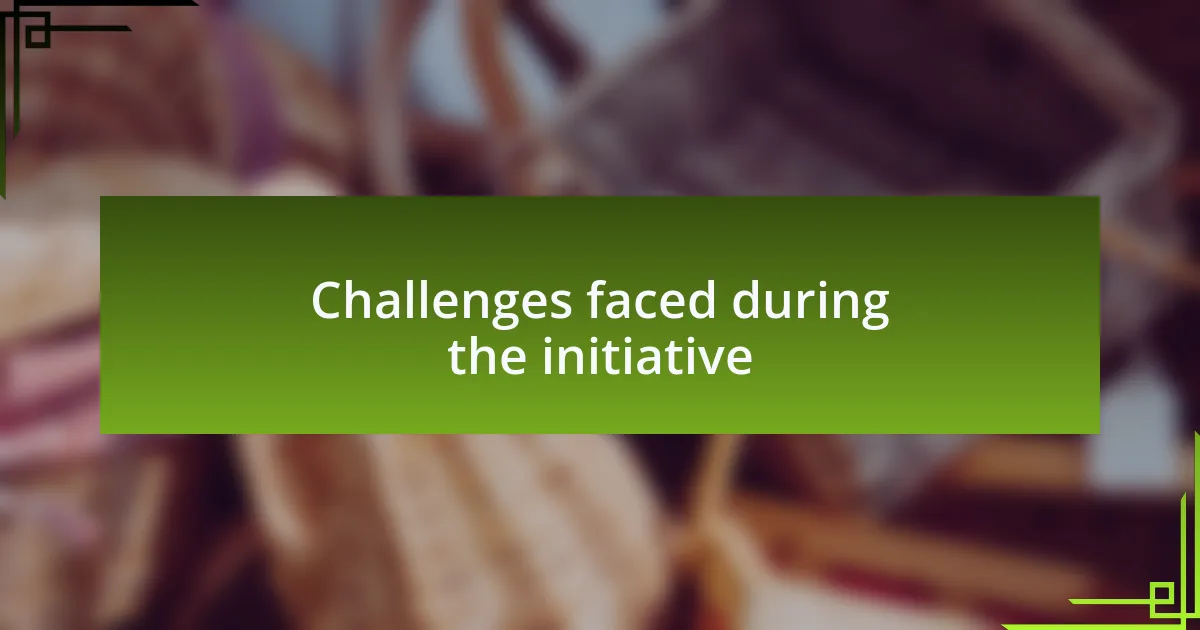
Challenges faced during the initiative
One of the biggest challenges I faced during the initiative was managing the diverse skill levels of participants. It was a bit overwhelming when some folks were absolute beginners, while others had vast experience. I found myself constantly adapting the complexity of the projects to ensure that everyone felt included and accomplished. How do you keep everyone engaged without leaving anyone behind? In those moments, I realized the importance of patience and encouragement; they became my essential tools.
Another hurdle was sourcing enough materials for everyone. I quickly learned that while some items might be plentiful, others were scarce. For instance, I once hoped to create a large mural using recycled bottle caps, but I found myself scrambling to collect enough. It was a humbling experience, teaching me that resourcefulness often leads to creative innovation. What would you do when faced with such scarcity? I discovered that sometimes it takes thinking outside the box to make the most of what you have.
Finally, I struggled with inspiring sustained commitment from participants once the initial excitement wore off. Many showed up full of enthusiasm in the beginning, but it waned as the weeks went on. I felt a sense of disappointment because I believed in the potential of our initiative. How can you ignite that passion again? I realized that fostering a community atmosphere was crucial — so I started incorporating regular check-ins and showcasing each person’s progress, which rekindled their excitement and made them feel valued.